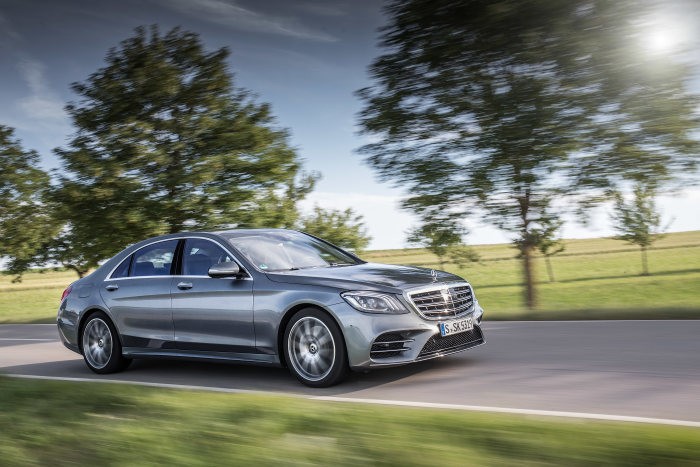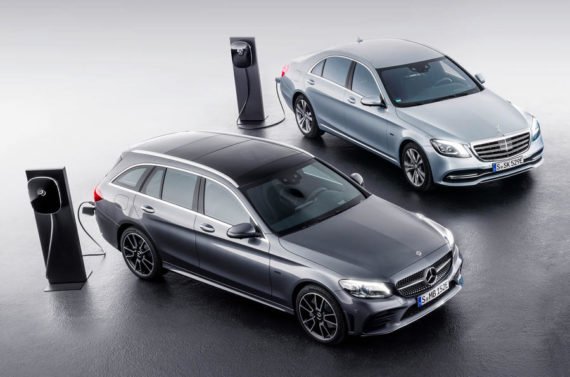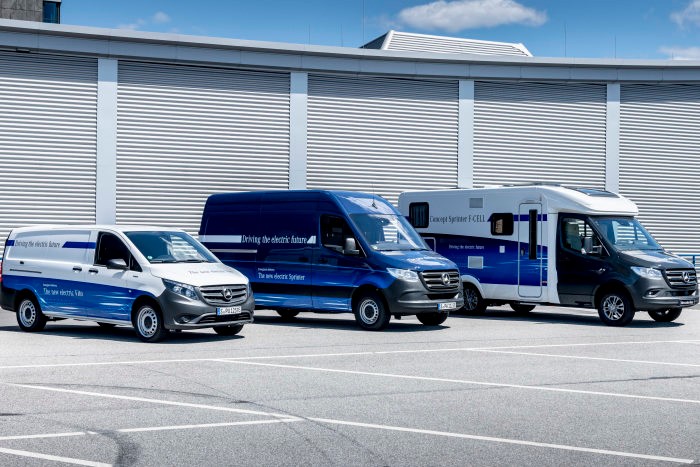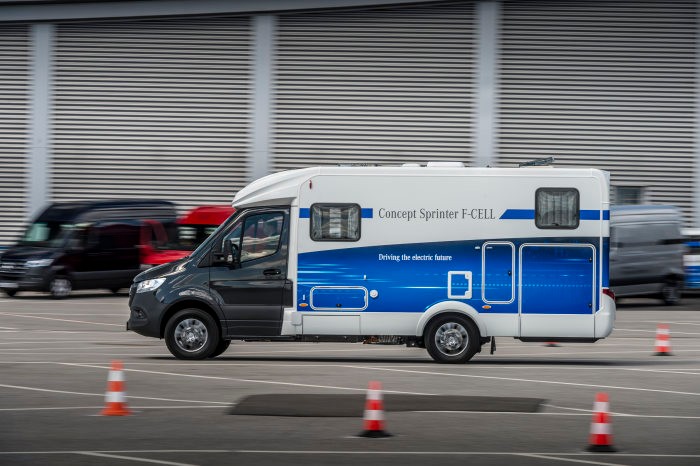06.
July 2018
Stuttgart
Press Contact for this Press Release (3)
Katja Liesenfeld
Manager Global Business Communications
Sales & After Sales Mercedes-Benz Cars
katja.liesenfeld@daimler.com
Tel: +49 711 17-32972
Fax: +49 711 17-790-24594
Nora Sterzinger
Global Business Communications
Sales & After Sales Mercedes-Benz Cars
nora.sterzinger@daimler.com
Tel: +49 711 17-33806
Fax: +49 711 17-24847
Sofia Stauber
Head of Global Business Communications
Mercedes-Benz Cars
sofia.stauber@daimler.com
Tel: +49 711 17-40598
Fax: +49 711 17790-91184
Mercedes-Benz S 500; fuel consumption combined: 6.6 l/100 km; combined CO2 emissions: 150 g/km* Best half-year in the companies’ history: 1,188,832 cars sold (+3.9%) Strongest quarter of all time (594,528 units, +1.9%) More than 200,000 vehicles were delivered to customers worldwide in June alone (-2.6%) China continues as largest individual market with over 340,000 units sold since the beginning of the year (+16.2%) Mercedes-Benz defends its market leadership in major markets Germany and the USA in the first six months of the year in the premium segment Best half-year sales of all time for E-Class Saloon and Estate Restricted availability of GLE and GLS after fire at US supplier Stuttgart – Mercedes-Benz can look back on the strongest-selling quarter in the companies’ history. From April to June, 594,528 customers received their new Mercedes-Benz (+1.9%). Thus, Mercedes-Benz sold more vehicles than ever before in a half-year: Since the beginning of the year, 1,188,832 cars with the three-pointed star were delivered to customers all over the world. Unit sales were thus 3.9% higher than in the previous highest first half-year in 2017. In the first six months, Mercedes-Benz was the premium brand with the most new registrations in several markets, including Germany, France, Russia, Switzerland, Portugal, South Korea, Australia, the USA and Canada.
With 203,783 vehicles sold, June was the month with the second highest sales since the beginning of the year (-2.6%). Figures of last month were affected amongst other things by a fire at a US supplier. This meant a significant lower production of the SUVs for the world market at the Mercedes-Benz plant in Tuscaloosa and sales were less than planned.
“Thanks to an outstanding team performance, we can look back on the most successful half-year in the history of Mercedes-Benz: with more than 1.18 million cars sold in the first six months, we have laid a good foundation for a successful year 2018,” stated Britta Seeger, Member of the Board of Management of Daimler AG responsible for Mercedes-Benz Cars Marketing & Sales. “The new A-Class has had a very successful reception from the markets and we will launch the new C-Class in July. These two volume models will make a significant contribution to the sales success of Mercedes-Benz in the second half of the year.”
Mercedes-Benz unit sales by region and market
In Europe, Mercedes-Benz sold 476,790 cars in the first half of the year (-1.5%), which is slightly less than in the previous, so far best, first half-year in 2017. Approximately one third of those cars were sold in Germany, where more than 150,000 customers were able to receive their new Mercedes-Benz (-0.2%). In France, Spain, Sweden, Poland and Denmark, more cars with the three-pointed star were sold than ever before in the first six months of a year.
Mercedes-Benz completed the first half of the year in the Asia-Pacific region with new best-ever sales, which increased by a double-digit 12.5% to 493,358 units. The biggest contribution to this growth came from China, where 340,164 cars with the three-pointed star were sold in the first six months, an increase of 16.2%. More cars of Mercedes-Benz than ever before in the first half-year were also sold in the markets of South Korea, Japan, India, Thailand and Malaysia.
In the NAFTA region, 191,249 Mercedes-Benz vehicles were handed over to customers in the period of January to June (-1.1%). Sales of 158,848 units in the USA were 1.9% below the very high prior-year figure. In Canada and Mexico, Mercedes-Benz set new sales records in the first six months of the year.
Mercedes-Benz unit sales by model
Sales of the S-Class Saloon increased by 27.5% to 43,106 units in the first half of the year. Growth in sales of the luxury model was particularly strong in the flagship’s biggest markets – China, the USA, South Korea and Germany. The Mercedes-Maybach S-Class Saloon set a new record in the first half of the year. Since its market launch, more than 30,000 units have now been handed over to customers.
The demand for the E-Class Saloon and Estate is higher than ever before. Since the beginning of the year, sales increased to the new record number of 182,135 units (+0.1%). The long-wheelbase version of the E-Class Saloon was especially popular in the first half-year; just like the long-wheelbase version of the C-Class Saloon, it posted very strong growth and a new sales record.
Despite restricted production of the GLE and GLS models last month, the SUVs from Mercedes-Benz achieved a new sales record in the first half of the year: a total of 422,645 units of the GLA, GLC, GLC Coupé, GLE, GLE Coupé, GLS and G-Class were delivered to customers worldwide (+9.8%). This was primarily due to the bestseller amongst the SUVs, the GLC.
smart
With over 13,000 deliveries of the smart fortwo and the smart forfour to customers in the last month, 5.0% more units were sold compared to June last year. Worldwide, 65,660 smarts were sold since the beginning of the year (-6.0%), of which the biggest market Germany posted a double-digit growth (+21.2%). This is mainly due to the success of the electric smart models. The smart brand had its 20th anniversary at the end of June: The first smart model drove off the assembly line at the plant in Hambach on July 1, 1998. Since then, more than 2.2 million units of the urban microcars have been handed over to customers.
Overview of sales by Mercedes-Benz Cars
June 2018
Change in %
Jan. – June 2018
Change in %
Mercedes-Benz
203,783
-2.6
1,188,832
+3.9
smart
13,197
+5.0
65,660
-6.0
Mercedes-Benz Cars
216,980
-2.2
1,254,492
+3.3
Mercedes-Benz unit sales in the region/market
Europe
82,813
-8.4
476,790
-1.5
– thereof Germany
25,632
-12.2
151,449
-0.2
Asia-Pacific
84,528
+7.4
493,358
+12.5
– thereof China
56,945
+13.7
340,164
+16.2
NAFTA
32,117
-8.0
191,249
-1.1
– thereof USA
26,191
-9.7
158,848
-1.9
Download
Filter
Show thumbnails
Show list
Slideshow
Zoom
Preview
Details
Do you really want to delete the data record?
Please wait a moment …
Please wait a moment …
Please wait a moment …
Please wait a moment …
16C947_30
17C522_021
17C892_031
Loading




